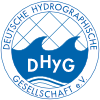HN Ausgaben wählen
- HN 132 (9)
- HN 131 (17)
- HN 130 (10)
- HN 129 (8)
- HN 128 (10)
- HN 127 (6)
- HN 126 (10)
- HN 125 (11)
- HN 124 (8)
- HN 123 (10)
- HN 122 (9)
- HN 121 (10)
- HN 120 (7)
- HN 119 (10)
- HN 118 (7)
- HN 117 (10)
- HN 116 (14)
- HN 115 (10)
- HN 114 (6)
- HN 113 (10)
- HN 112 (7)
- HN 111 (9)
- HN 110 (9)
- HN 109 (11)
- HN 108 (8)
- HN 107 (9)
- HN 106 (7)
- HN 105 (14)
- HN 104 (6)
- HN 103 (11)
- HN 102 (8)
- HN 101 (9)
- HN 100 (13)
- HN 097 (1)
Reconstruction of glacial history of the area north of Svalbard/Spitsbergen
Since the mapping of the past ice sheets in the Arctic margins are still an ongoing process, updates to the various regions regarding the subject is essential. Past studies have suggested that Svalbard-Barents Sea Ice Sheet seem to have progressed towards north through the Yermak Plateau not many times during the Quaternary. Some others have also suggested that in the Fram Strait where ice had to transit through the Yermak Plateau on its way out of Arctic, should have been deformed by thick ice shelf or icebergs, which could provide some clues on past Arctic Ocean glaciations. Therefore, the geophysical records are important in the reconstruction of maximum extent, dynamics and timing of the ice sheet.
Svalbard-Barents Sea ice sheet | Yermak Plateau | ice shelf | icebergs | Quaternary
- Ausgabe: HN 107 Seite: 20–26
- DOI: 10.23784/HN107-04
- Autor/en: Dilip Adhikari
Geological interpretation of bathymetric and backscatter data
The Geomar Helmholtz Centre for Ocean Research Kiel carried out two cruises in the eastern equatorial Pacific back in 2015 and collected multibeam, backscatter and sub-bottom data along with other oceanographic information. This work focuses on the evaluation and processing of the echo sounder data sets. Wrong measurements encountered during the data processing are analysed and corrected. A geological classification and interpretation of the seafloor by using the ArcGIS tool »Benthic Terrain Modeler« and an algorithm for Principal Component Analysis and K-means clustering. Classifying the seafloor helps to identify pit structures lining the seafloor which possibly formed due to dissolutions in the seabed.
Angle Range Analysis | Benthic Terrain Modeler | Principal Component Analysis | K-means classification
- Ausgabe: HN 107 Seite: 15–19
- DOI: 10.23784/HN107-03
- Autor/en: Corinne Melchior
High-frequency snippet backscatter information – Introducing a promising alternative to precisely detect surficial ammunition in shallow coastal waters
Within the last years, backscatter information collected with high-frequency multibeam echo sounder systems are moving more and more to the centre of the hydrography community’s attention. Not only the imagery processing possibilities for backscatter information, but also the image generating technique itself has been strongly optimised. Using snippet backscatter data, high-resolution images with a pixel size of up to 0.05 m for shallow coastal waters can be generated. Combined with the possibility of vessel-based differential global navigation satellite system (DGNSS) positioning, snippet backscatter information can be indicated as a promising prospective method for surficial ammunition detection offering a horizontal positioning accuracy of up to 0.1 m. To stay abreast of changes, this article should introduce the fundamentals of a baseline study conducted within a cruise with RV »Alkor« (AL447).
ammunition detection | Baltic Sea | DGNSS | multibeam echo sounder | snippet backscatter
- Ausgabe: HN 107 Seite: 10–14
- DOI: 10.23784/HN107-02
- Autor/en: Tina Kunde
Where have you been, Polarstern? – The most likely position for each moment in a long traveller’s life
We have investigated the quality of position data of one of the longest continuously documented history of an individual research vessel: The impressing track record of the German icebreaking research vessel Polarstern started the 9th of December 1982 and continues up to date. The ship has travelled 1 639 449 nautical miles (until the end of 2016) during the last 35 years and yields thus a huge amount of global position data gathered using different systems. The data quality and frequency was continuously updated and improved. Here, we present an approach to represent the whole track record at respective maximum achievable accuracy in a unified format. This data set, the so-called ›Master Track‹ represents the most likely position during all of Polarstern’s voyages.
Polarstern | track record | positioning | antenna position | motion data
- Ausgabe: HN 107 Seite: 6–9
- DOI: 10.23784/HN107-01
- Autor/en: Regina Usbeck, Sebastian Rössler, Peter Gerchow


